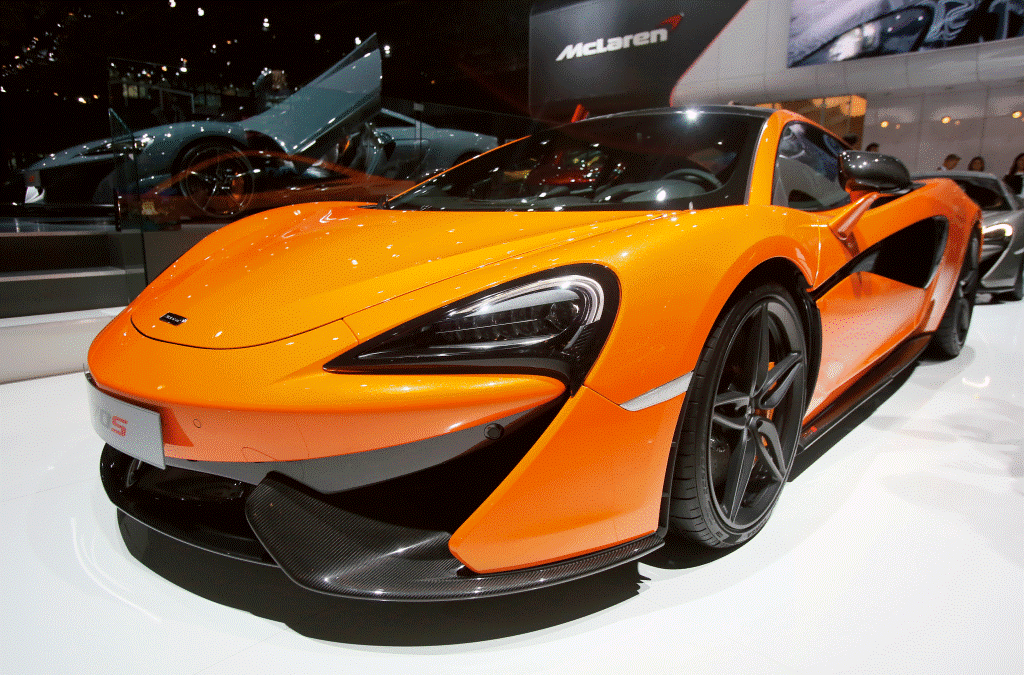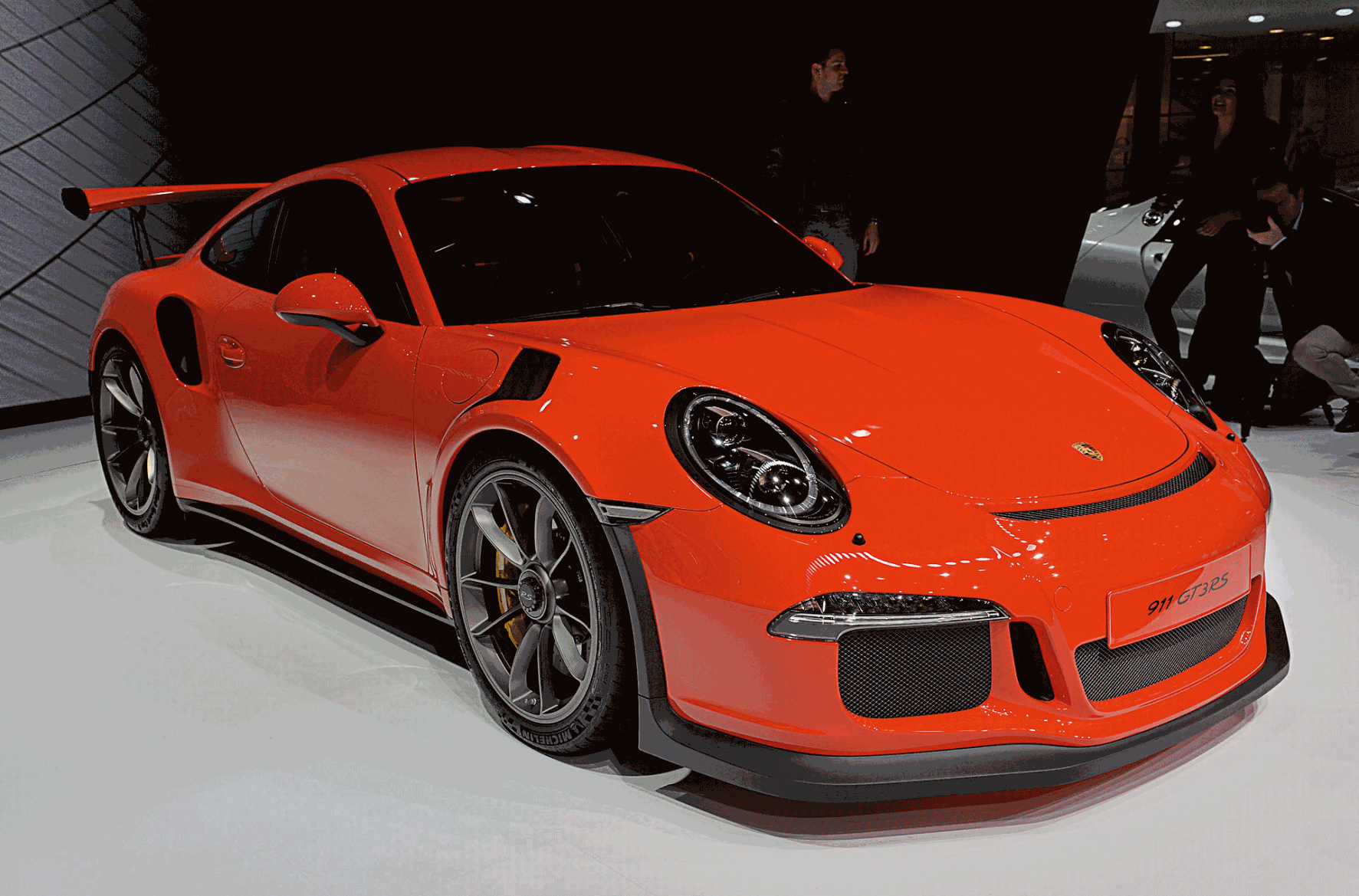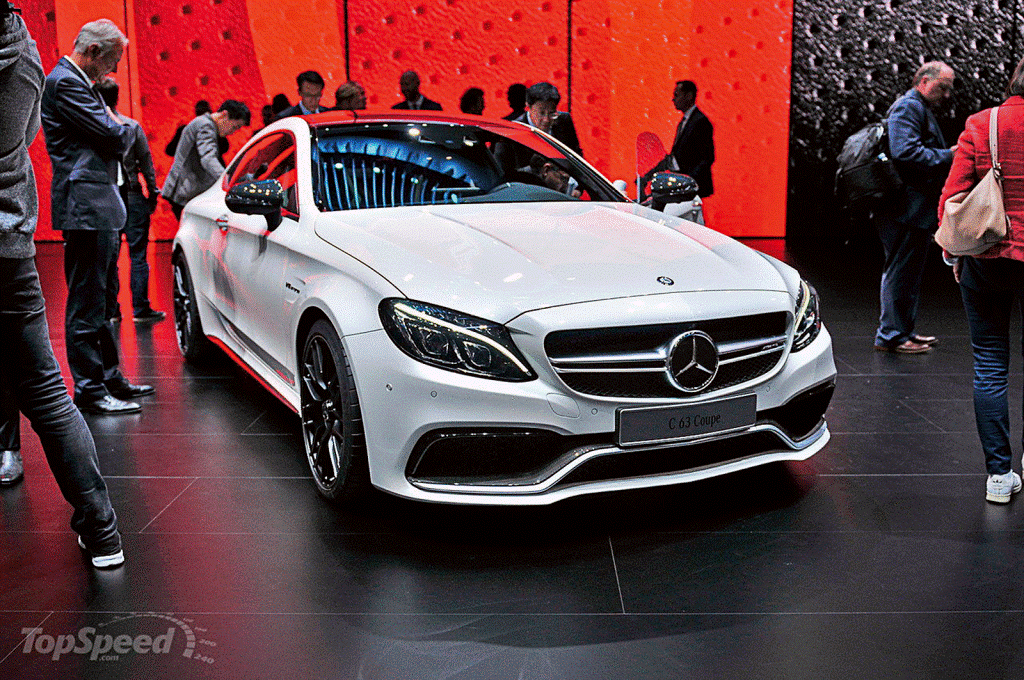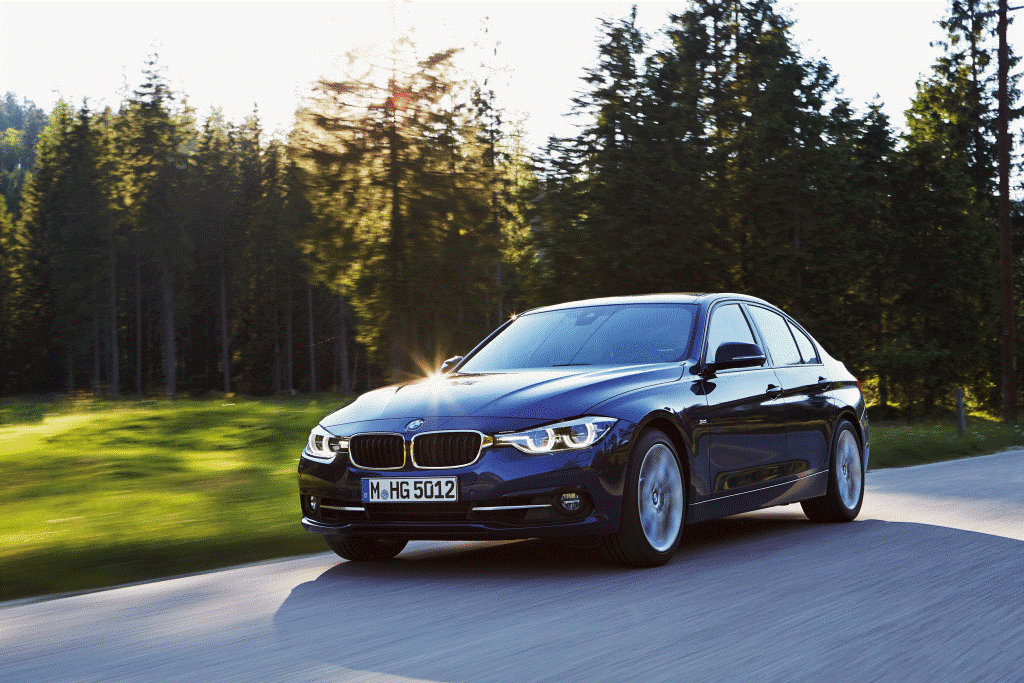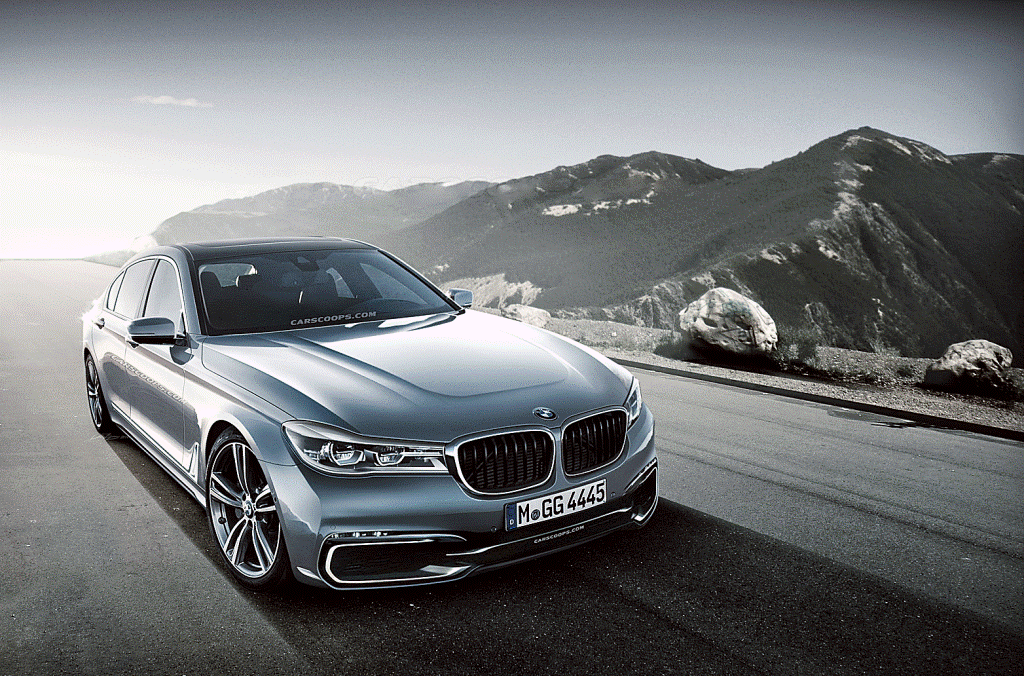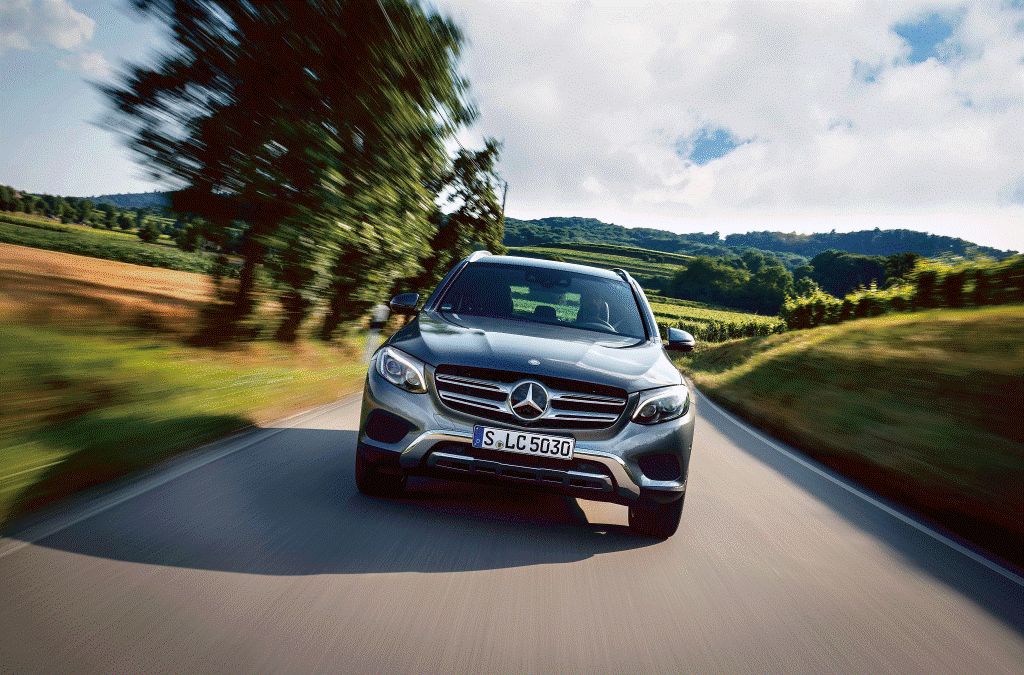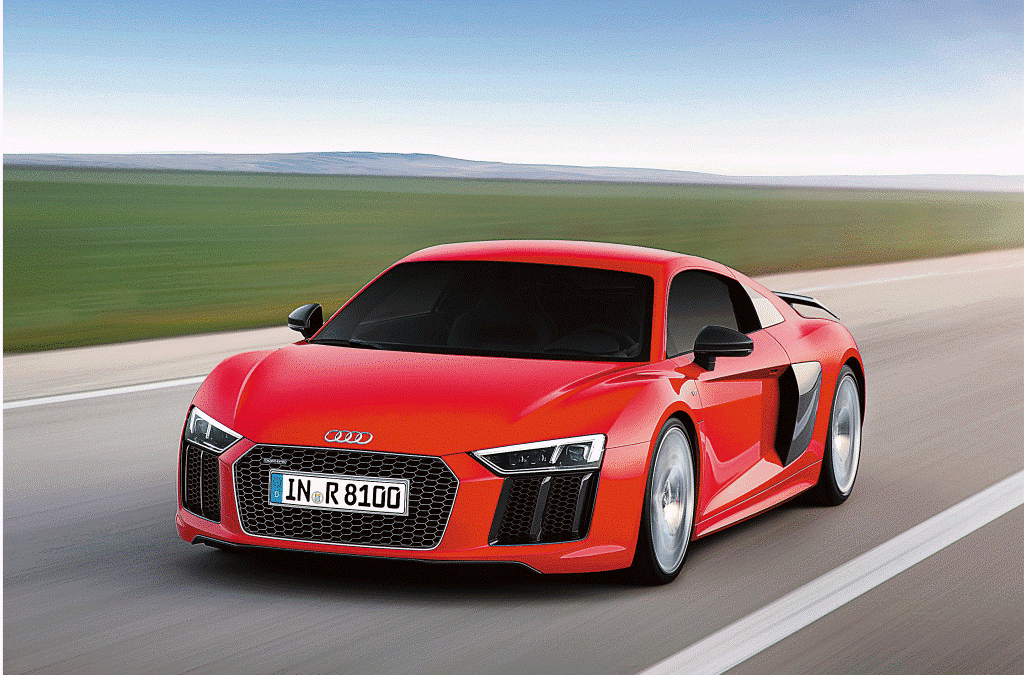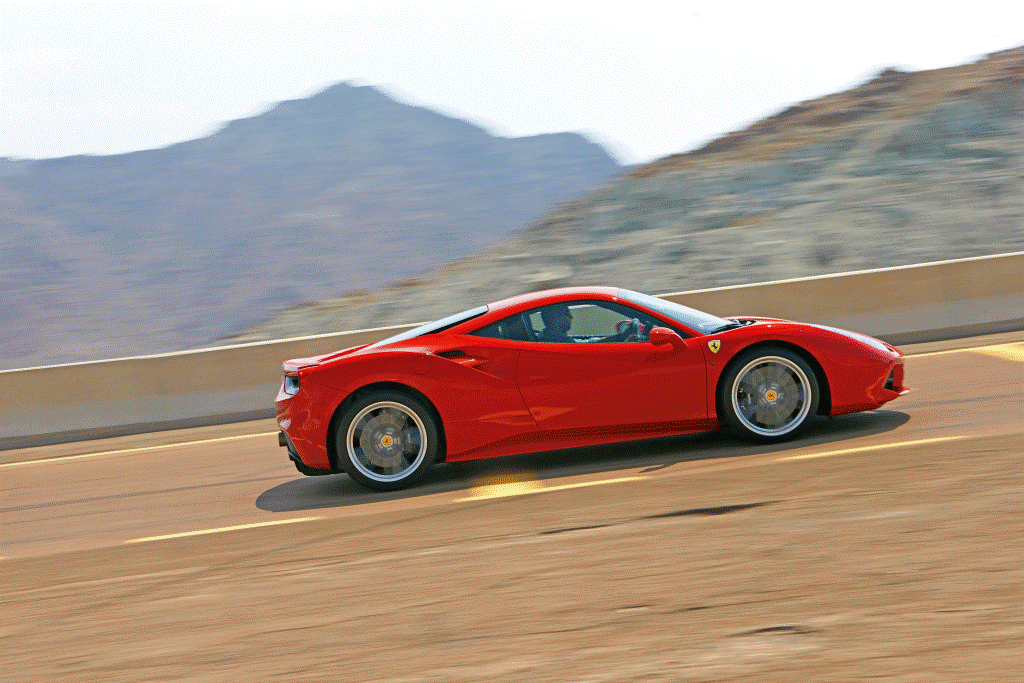
How much horsepower, how fast does it go, how hard can you drive it, what’s the cost, what’s the mileage… so many questions and so many cars. Take it easy and just scroll as GN Focus whittles down the ten most anticipated launches at the Dubai International Motor Show that opens today. Midsize saloon or hypercar, we have it sorted
FERRARI 488 GTB
The company takes cues from its past for direction in performance enhancement and nomenclature. Is it the right thing to do? We take the beast to the mountains to find out
Highlights
At 661bhp and 760Nm of torque, the 488 GTB goes head-to-head with the older Ferraris with naturally aspirated V12s.
It is 10kg lighter than the 458 Italia, and has nearly 100 horses more than the 458’s larger V8, and a mammoth 220Nm incremental torque, which is a 40 per cent hike.
With 169bhp and 195Nm per litre, the 488 GTB delivers the highest specific output of any road-going Ferrari to date. The seven-speed gearbox is palpably quicker on both upshifts and downshifts than the 458 Italia, and matches the Speciale’s.
Verdict
So, is it one of the best Ferraris yet? The short answer is yes. Mind-blowing performance to staggering composure, the 488 GTB has it all. With this car, Ferrari has accomplished the challenging task of adding more power and performance with the help of forced induction, while keeping the intricacy and character of a Maranello supercar intact.
The 458 Italia was one of the best driver’s cars in the world and a hard act to follow. But Ferrari has managed to surpass that benchmark convincingly with the 488 GTB.
Should you really hold turbocharging, marginally diminished aural drama and a subjective lack of involvement against one of the best mid-engined supercars on the market today? We think not.
Specs
Model: 488 GTB
Engine: 3.9-litre V8 turbo
Transmission: Seven-speed auto, RWD
Max power: 661bhp @ 8,000rpm
Max torque: 760Nm @ 3,000rpm
Top speed: 330kph
0-100kph: 3.0 sec
Length: 4,568mm
Width: 1,952mm
Height: 1,213mm
Wheelbase: 2,650mm
Weight: 1,475kg
Price: Dh955,000 (base)
For a full review of the all-new Ferrari 488 GTB, visit Wheels.ae
By Sony Thomas | Deputy Editor — Wheels
2015 MCLAREN 570S COUPE SPORTS SERIES
It’s fast. It’s beautiful. And it makes a noise that will make any petrolhead go weak in the knees. So then, what’s new about McLaren’s 570S variant?
Highlights
McLaren’s entry-level sports car is significantly different from the McLarens that have been scurrying out of Woking since the automotive side of the company got going in 2011. Drivability aside, the tech is different. The suspension is totally different, more mechanical with dual anti-roll bars rather than electronically controlled body roll. The MonoCell has been tweaked to allow for better entry and exit, and on a winding public road 562bhp somehow seems just right to exploit almost everything from the communicative 570S. The vehicle also comes with a hydraulic rack with a fixed steering ratio.
A convertible version could be seen as early as next year, but production is planned for 2017. McLaren reveals that a third body style in the Sports Series is in the works but they are not saying anything more.
Verdict
It’s an excellent vehicle even though a lot of noise is being made about its noise, which, with a turbocharged 3.8-litre V8, simply can’t match the sound of an Audi R8 or a 911 GT3. And while on comparisons, after taking the car out for a spin on the Autodromo Algarve in Portugal as well as the empty surrounding roads we reckon the 570S is more of a driver’s car, more of a big, fast, well-built Lotus.
Specs
Model: 570S
Engine: 3.8-litre M838TE Twin turbo V8
Transmission: Seven-speed seamless shift dual-clutch
Power: 562bhp @ 7,500rpm
Torque: 600Nm @ 5,000-6,500 rpm
Top speed: 328kph
0-100kph: 3.2 secs
Weight: 1,344kg
Price: Dh738,400 (base)
For more on the McLaren 570S Sports Coupé, visit Wheels.ae
By Dejan Jovanovic
MERCEDES-AMG C 63 COUPE
The Coupé is similar to the regular C 63 in many ways but chooses to define its own path in some others. But it’s still a great car
Highlights
The C 63 AMG comes strapped with huge air intakes, wider fenders — it’s 63.5mm and 66mm broader at the front and back respectively than the regular C 63 — and a larger rear diffuser.
Superb dynamics are assured with a totally redesigned multi-link front and rear suspension (it doesn’t share a single part with the regular coupé), optional carbon-ceramic front discs and forged wheels. It comes with a mechanical limited-slip differential (the S gets an electronically controlled differential, not to mention active engine mounts just like the AMG GT) and rides on 225/40R-18 front and 285/35R-18 rear tyres, while the S gets 255/35R-19 front and 285/30R-19 back rubbers.
Verdict
The AMG C 63 isn’t all about power; it’ll be able to handle and corner with the best of them, and by that we mean the BMW M4.
Specs
Model: AMG C 63 Coupé
Engine: 4l V8 Biturbo
Transmission: Seven-speed auto, RWD
Max power: 476bhp
Max torque: 650Nm
0-100kph: 4sec
Top speed: 250kph
Price: N/A
For more on the latest AMG C 63, visit Wheels.ae
By Imran Malik | Features Writer, wheels
PORSCHE 911 GT3 RS
The 911 has always remained a car for any and all occasions. The GT3 RS does not mess with tradition here. But there are changes
Highlights
The GT3 RS is as suited to cracked public back roads as it is to rumble strips. As it, of course, always had to be. A 911 is a sportscar for all occasions, and just because you’ll find the new RS engine in Porsche’s latest GT3 racecar, that doesn’t mean you can’t take it to the shops.
Like in any naturally aspirated 911 the pull isn’t spectacular, just always there and climbing. It doesn’t explode like a Turbo. You tend to drive a car like this with a smooth throttle so as not to upset the balance (or your passenger) with its instant response.
Porsche took the GT3’s 3.8 and got to work on it, increasing stroke by 4mm to get a 4.0-litre displacement and 25bhp with 20Nm of torque. The RS is still 60 horses down on a Turbo S. The crankshaft is made of the same unobtanium they use for the 919 LMP1 racing car, and the air induction is completely different, with intakes on the rear flanks rather than at the top of the engine lid as in the GT3.
The steering is as good as it can be, basically, because no other car on the road right now has an electric system this nicely tuned — it’s light and it jiggles with the tarmac’s cracks just right and works in the background with the rear-wheel steering (by 1.5 degrees) off the GT3.
Verdict
The GT3 RS is so good it’s fictional. A GT3 would do just fine, but no one would be disappointed in the phenomenal RS. This car makes a mockery of supposed Sportscars with 500, 600 or even 700 horsepower. It’s a diktat. An end to the horsepower war.
Specs
Model: 911 GT3 RS
Engine: 4.0-litre six-cylinder
Transmission: Seven-speed auto, RWD
Max power: 500bhp @ 8,250rpm
Max torque: 460Nm @ 6,250rpm
Top speed: 310kph
0-100kph: 3.3sec
Length: 4,545mm
Width: 1,880mm
Height: 1,291mm
Wheelbase: 2,457mm
Weight: 1,420kg
Price: Dh617,000
For a full review on the car, visit Wheels.ae
By Dejan Jovanovic
THE NEW BMW 3 SERIES
With few cosmetic changes and an all turbocharged line-up, the new 3 Series hopes to retain the number one spot in its segment
Highlights
Cosmetic updates, for starters, can be best described as minimal on the new BMW 3 Series. You can opt for full-LED headlights, and they now sit a bit wider than the car it updates. The front bumper is more sculpted with wider intakes and the rear boasts engine-specific exhaust tips. A selection of new colours are also available.
All the petrol engines (and the four-cylinder diesel units) in the new 3 Series are sourced from BMW’s newly developed modular EfficientDynamics family and are now turbocharged. Featuring 500cc per cylinder, it is now pretty simple to work out engine capacity throughout the range, beginning with the three-cylinder (yes, there are now three-cylinder 3 Series models), which is a 1.5-litre, a four-cylinder that is a 2.0-litre and a six-cylinder petrol engine that is a 3.0-litre. Mated to this straight-six is a new ZF-sourced eight-speed Steptronic transmission, which is actually faster than the manual ’box. That all-important (for the traffic-light grand prix and not much else) 0-100kph time now arrives in 5.1 seconds and you can easily hit the capped top speed of 250kph in sixth.
Verdict
The new BMW 3 Series has moved the game on yet again. Its blend of sophistication and proper driving dynamics has always been its strength and, 40 years on, that hasn’t changed. In the compact executive saloon segment, 3 is still a magic number.
Specs
Model: 340i
Engine: 3.0-litre six-cylinder turbo
Transmission: Eight-speed auto, RWD
Max power: 326bhp @ 5,500rpm
Max torque: 450Nm @ 1,380rpm
Top speed: 250kph
0-100kph: 5.1 sec
Length: 4,633mm
Width: 1,811mm
Height: 1,429mm
Wheelbase: 2,810mm
Weight: 1,615kg
Price: NA
For the full review on the all-new BMW 3 Series, visit Wheels.ae
By James Davison
THE NEW BMW 7 SERIES
The new 7 is not all about luxury. Always agile but now with quicker response times, the 2.5-tonne car is perfectly at ease on bends and straights
Highlights
The interior of the new BMW 7 Series is beautiful and built with precision that invites a detailed look. Get up real close to the borders of brushed aluminium and wood and it’s all perfect. There isn’t an inch of plastic, and without knowing that, you notice it indirectly in the cabin’s atmosphere. The ultra-comfortable seats have infinite adjustment and are so plush and deep that they envelope you in a cocooned driving position, cushioned by well-padded side bolsters with your legs dangled lazily over the extending seat. The back of your head sinks into the deep headrest down to the temples. Driving is an effortless affair if you want it to be.
It’s not only about luxury. The new 7 responds like a 5 Series, with certainty and without the need to adjust the steering through bends, with only an assured grip on the road and unruffled but very quick progress. The engine can barely be heard, yet this isn’t far off what a little hot hatchback could do around here. Even the steering is good and offers more feel than we’ve become conditioned to expect from a massive luxury barge today, with a rational tension in its weighting, a quick ratio and direct but weighty, big-car response.
When you place this much weight, nearly 2.5 tonnes in our case, on an apex through a corner and the car follows so tightly, confidence comes along. The 750Li is a great thing to hustle up and down flowing bends that run into each other without pause giving no room to straightaways.
Another big highlight is the key, which looks like an old Vertu phone. With swipe motions, the key lets you manoeuvre the car in and out of parking spots, and it’ll even sense obstacles and stop or steer around them.
Verdict
A car like this declutters your world. That’s the opposite of complicated. It’s convenience, something rich folk know not to put a price on.
Specs
Model: 750Li xDrive
Engine: 4.4-litre V8 turbo
Transmission: Eight-speed auto, AWD
Max power: 450bhp @ 5,500rpm
Max torque: 650Nm @ 1,800rpm
Top speed: 250kph
0-100kph: 4.5sec
Length: 5,238mm
Width: 1,902mm
Height: 1,749mm
Wheelbase: 3,210mm
Weight: 1,990kg
Price: N/A
For more on the new 7 Series, visit Wheels.ae
By Dejan Jovanovic
MERCEDES-BENZ GLC
Plush interiors, hi-tech gadgets and other little design touches make the GLC a pleasure to drive
Highlights
If you were to remove the badges and chrome grille from the all-new Mercedes GLC mid-sized SUV, from the outside, I’d have trouble identifying it in a line-up of similarly specified rivals. If it’s difficult for designers to break the external styling rules, what’s a car company to do to set itself apart and take a bite-sized chunk out of the Middle East’s lucrative mid-sized SUV market? Surrounding the occupants with luxury and hi-tech gizmos would seem to be the Mercedes answer, and in that regard the GLC doesn’t disappoint.
The interior finish is, happily, very reminiscent of the C-Class saloon, with extremely comfortable seats, an uncluttered dashboard area, a quality feel to all the tactile surfaces, and switchgear you just know will still be working reliably in 12 to 15 years’ time.
The GLC has also been on a diet, weighing in at 80kg less than its predecessor, the GLK, and will be available with a choice of two petrol engines here: the 250 and 350. The former is a 2.0-litre, four-cylinder engine rated at 211bhp with 350Nm of torque, while the latter is a 3.5-litre V6, producing 306 bhp and 370Nm.
On-road performance is on a par with others in this segment — safe and secure, but not particularly exciting. I was driving the 250 4MATIC, which comes with a nine-speed automatic gearbox. When called upon, it had enough strength to take me swiftly past a large truck climbing a steep, narrow hill. A neat new feature is a red warning triangle on the dashboard that lights up when driving too close to the car in front and an on-board 360-degree camera system, fitted as standard on all models — approach a drop and the camera displays what’s ahead of the front wheels on the infotainment screen, even if the view from the windscreen is nothing but sky and clouds.
Verdict
The GLC is a bigger, better-looking, more capable successor to the GLK and should sell in big numbers in the region. Supple ride, electronic wizardry and little touches designed to make the driving experience less stressful all add up to a package that Mercedes admirers will find hard to resist.
Specs
Model: GLC 250 4MATIC
Engine: 2.0-litre
four-cylinder turbo
Transmission: Nine-speed auto, AWD
Max power: 211bhp @ 5,500rpm
Max torque: 350Nm @ 1,200rpm
Top speed: 233kph
0-100kph: 7.3 sec
Length: 4,656mm
Width: 1,890mm
Height: 1,639mm
Wheelbase: 2,873mm
Weight: 1,735kg
Price: NA
For more on new GLC, visit Wheels.ae
By Tim Ansell
AUDI R8 V10 PLUS
There’s more to the new R8 than a lightweight aluminium frame considering it’s the fastest production Audi ever
Highlights
The new R8 comes wrapped in a lightweight aluminium space frame that lends the car a new feel, but it’s still the same all-wheel-drive, mid-engined supercar. The Plus has a 5.2-litre V10 producing its peak at 8,250rpm, and 560Nm of torque at 6,500rpm. Its top end is in fact 5kph higher than the Lamborghini Huracán’s 330kph, and it’ll do 0-100kph in 3.1 seconds, which means that properly specced (optional wheels and tyres, for example) the Plus can outrun a Huracán to the ton by one-tenth of a second.
The R8 is seamless, the engine linear in its power delivery, without a single hesitance in the constant onrush of revs. With seven gears, you’re kept busy in the Plus thanks to perfect gear ratios that lend themselves nicely to categorising corners.
The steering is actually OK, but the totally new electromechanical system doesn’t offer the same amount of feedback as the mechanical system in the old R8. The car also belies its massive optional rubber, measuring 245/30 up front and 305/30 at the back, and nicely tracks road cambers and dips and bumps, telling you what it’s doing. The steering stays quiet, miming its way around. So there’s no feel, but there’s instant response. and although every nuance of the road surface coming through a thin, hard rim would be welcome, this is a decent modern trade-off with the added benefit of tiny countersteering inputs in sport mode in case you don’t react.
The virtual cockpit concept works great as a 12.3-inch screen right in front of the driver. It’s configurable, so you can spend a minute before setting off ensuring you have only the key information on display before you take on a mountain pass. The other novelty is laser lights, available for a bit of extra money. They’re high-beams essentially, turning nighttime into daytime without bothering oncoming drivers.
Verdict
This is the fastest and quickest production Audi ever, so it’s bound to have a few special bits hiding underneath. In fact Audi’s boss of Technical Development, Prof. Dr Ulrich Hackenberg swears that the production model is “in all technical areas, extremely close to the R8 LMS [race car]”.
Specs
Model: R8 V10 Plus
Engine: 5.2-litre V10
Transmission: Seven-speed auto, AWD
Max power: 602bhp @ 8,250rpm
Max torque: 560Nm @ 6,500rpm
Top speed: 330kph
0-100kph: 3.1 sec
Length: 4,426mm
Width: 1,940mm
Height: 1,240mm
Wheelbase: 2,650mm
Weight: 1,454kg
Price: 187,400 euros
(about Dh760,000)
For the full review on the Audi R8 V10 Plus, visit Wheels.ae
By Dejan Jovanovic
AUDI A4 35 TFSI
Audi turns up the heat with the new A4 as chief rival BMW updates its 3 Series
Highlights
Intense competition in the segment has forced Audi to do what it takes to raise benchmarks even higher. It’s an all-new A4 therefore, with a body that achieves the lowest drag coefficient in class, a new range of engines and a new cabin with lots of smart technology.
Visually, you won’t mistake this car for anything other than an A4, and that is exactly what Audi wants, but happily there are notable improvements over the old car in the looks department. It’s slicker than before; the front is more sharp and the rear more purposefulwhich looked faintly apologetic from some angles. Naturally, you need a decent size of alloy wheel to get the most from it, but it will cut more of a dash in the car park.
Incremental improvements in legroom, headroom and boot space all add up to a cabin that is spacious without sacrificing anything in terms of the feel-good factor. Driving dynamics have been a sore point for the A4 in the past, never being able to match the dynamics of the BMW 3 Series in terms of engagement. It’s different now though. The A4 is considerably lighter, up to 120kg depending on the model, and the new chassis and suspension set-up offer some significant dynamic improvements. The ride quality impresses most of all, being markedly smoother and more controlled than before.
Verdict
Competition is particularly fierce in this class and it’s good to be able to say there are nothing but great cars for competition. This new A4 improves on the old car not only in all the obvious ways — tech, weight and efficiency — but it’s also better looking and a better drive. It’s still not the last word in driving pleasure, but arguably it is the segment’s best all-rounder.
Specs
Model: A4 35 TFSI
Engine: 1.4-litre
four-cylinder turbo
Transmission: Seven-speed auto, FWD
Max power: 148bhp @ 5,000rpm
Max torque: 250Nm @ 1,500rpm
Top speed: 210kph
0-100kph: 8.5 sec (approx.)
Length: 4,726mm
Width: 1,842mm
Height: 1,427mm
Wheelbase: 2,820mm
Weight: 1,450kg (approx.)
Price: NA
For a full review on the new Audi A4, visit Wheels.ae
By Matt Joy
LAMBORGHINI AVENTADOR LP 750-4 SUPERVELOCE
It’s the third road-legal supercar to hurtle down the Nürburgring in under seven minutes and it’s managed to sell units at a cracking pace too
Highlights
Just 600 units of the Superveloce will be built, of which 500-plus are said to be already pre-sold, so the machine must be something. And it is. Possibly Lamborghini’s fastest yet, the car lapped the perilous 20.8km Nürburgring Nordschleife in six minutes and 59.73 seconds (the only two other road-legal cars to have lapped the track in under seven minutes are the Porsche 918 Spyder and McLaren P1). Lamborghini claims the car can be made to go about two seconds quicker!
The Superveloce also offers a superior chassis than its predecessor, the Murciélago and a more sophisticated stability-control safety net. The 6.5-litre V12 hardly a shrinking violet in the standard Aventador, but in the SV it scores a 200rpm higher redline (it’s up from 8,300 to 8,500rpm), while peak power rises to 739bhp. The keys to these higher figures are optimised variable valve timing and variable intake systems, as well as a raucous new free-flow exhaust system that exits via four round tailpipes.rather than the single hexagonal drainpipe worn by the regular Aventador.
Extensive use of carbon fibre is an area Lamborghini prides itself in, and the Aventador reaps benefits this time around, saving up to 50kg (yielding a dry weight of 1,525kg).
The sublime dual-clutch ’box in the Ferrari F12, however, cannot be matched by the Aventador’s single-clutch ISR gearbox, lacking some of that whip-crack immediacy and seamlessness. It’s an element you feel that holds the car back from being a flawless track weapon. No criticisms of the new adaptive steering though. It’s simply brilliant in terms of feel, precision and weighting. The thought of jumping into a 739bhp supercar and wringing its neck around a track I’d never driven before may have seemed a tad daunting at the outset, but it wasn’t once we were under way. Credit is also due to the fine chassis tuning of the Aventador SV, and the magnetorheological dampers play their part.
Verdict
We should celebrate one of the last old-school, yet new-age supercars in the Superveloce. It’s a magnificent machine that will also be formidable on the right road out in the real world.
Specs
Model: Aventador LP 750-4 SV
Engine: 6.5-litre V12
Transmission: Seven-speed auto, AWD
Max power: 739bhp @ 8,400rpm
Max torque: 690Nm @ 5,500rpm
Top speed: 350kph+
0-100kph: 2.8sec
Length: 4,835mm
Width: 2,030mm
Height: 1,136mm
Wheelbase: 2,700mm
Weight: 1,525kg
Price:Dh1.8 million (approx.)
For the full review, visit Wheels.ae
By Gautam Sharma


